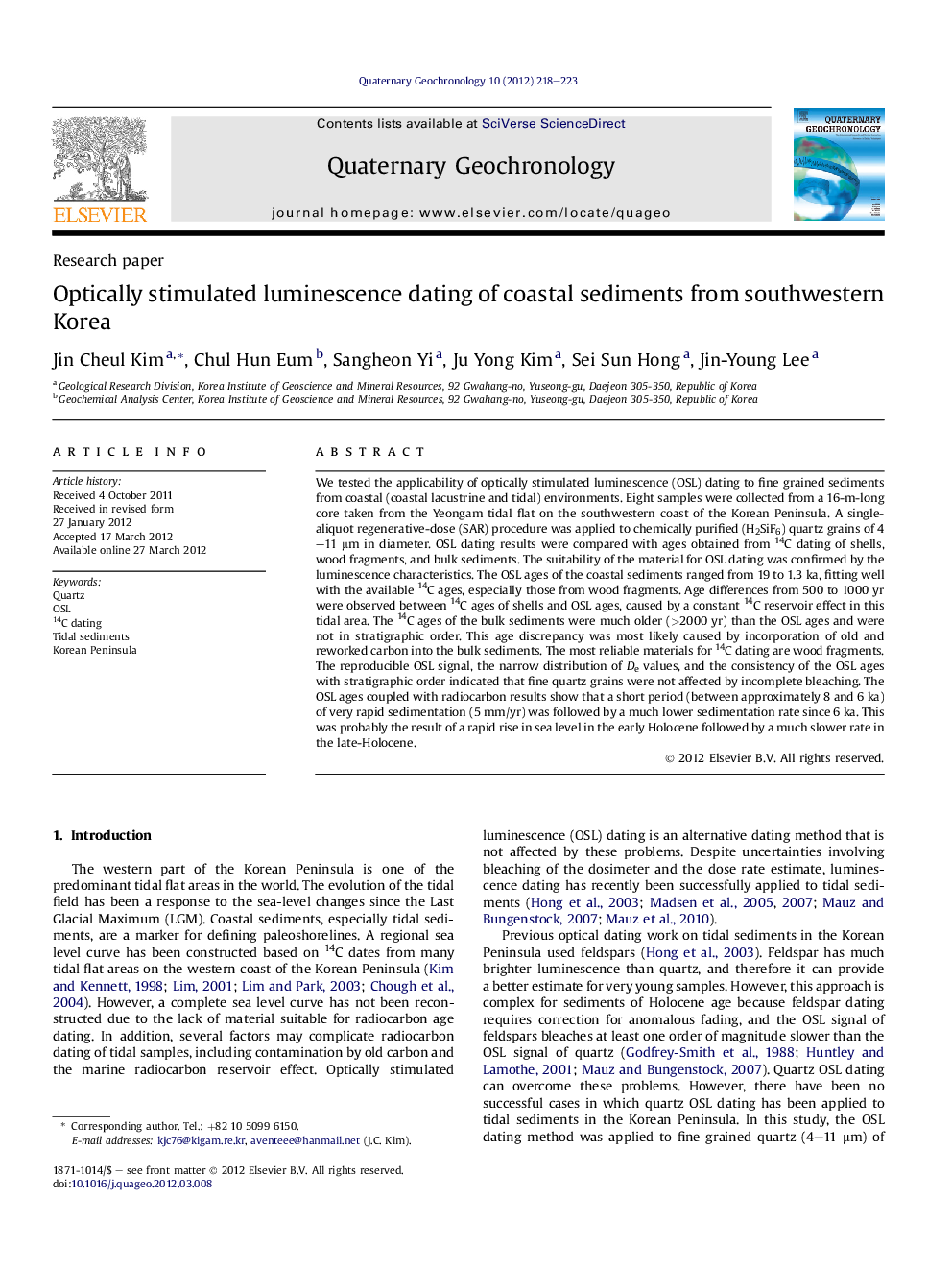| کد مقاله | کد نشریه | سال انتشار | مقاله انگلیسی | نسخه تمام متن |
|---|---|---|---|---|
| 4725125 | 1639866 | 2012 | 6 صفحه PDF | دانلود رایگان |

We tested the applicability of optically stimulated luminescence (OSL) dating to fine grained sediments from coastal (coastal lacustrine and tidal) environments. Eight samples were collected from a 16-m-long core taken from the Yeongam tidal flat on the southwestern coast of the Korean Peninsula. A single-aliquot regenerative-dose (SAR) procedure was applied to chemically purified (H2SiF6) quartz grains of 4–11 μm in diameter. OSL dating results were compared with ages obtained from 14C dating of shells, wood fragments, and bulk sediments. The suitability of the material for OSL dating was confirmed by the luminescence characteristics. The OSL ages of the coastal sediments ranged from 19 to 1.3 ka, fitting well with the available 14C ages, especially those from wood fragments. Age differences from 500 to 1000 yr were observed between 14C ages of shells and OSL ages, caused by a constant 14C reservoir effect in this tidal area. The 14C ages of the bulk sediments were much older (>2000 yr) than the OSL ages and were not in stratigraphic order. This age discrepancy was most likely caused by incorporation of old and reworked carbon into the bulk sediments. The most reliable materials for 14C dating are wood fragments. The reproducible OSL signal, the narrow distribution of De values, and the consistency of the OSL ages with stratigraphic order indicated that fine quartz grains were not affected by incomplete bleaching. The OSL ages coupled with radiocarbon results show that a short period (between approximately 8 and 6 ka) of very rapid sedimentation (5 mm/yr) was followed by a much lower sedimentation rate since 6 ka. This was probably the result of a rapid rise in sea level in the early Holocene followed by a much slower rate in the late-Holocene.
► Optical dating of coastal sediments was compared with 14C ages.
► The OSL ages ranged from 19 ka to 1.3 ka.
► The OSL ages agreed well with 14C ages from wood fragments.
► Age discrepancy was caused by old reworked carbon and reservoir effect.
Journal: Quaternary Geochronology - Volume 10, July 2012, Pages 218–223